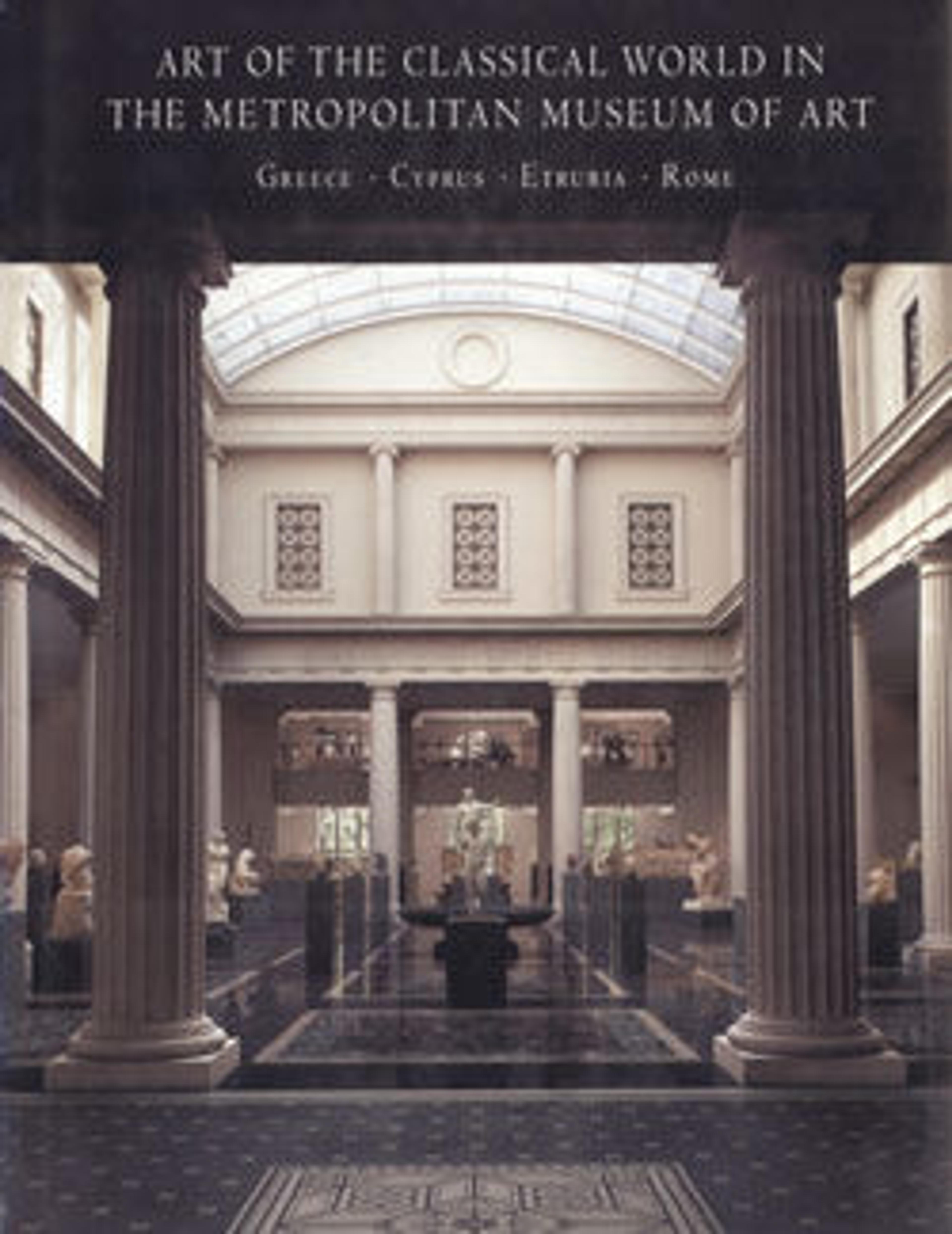Terracotta calyx-krater (bowl for mixing wine and water)
Obverse and reverse, Amazonomachy (battle between Greeks and Amazons)
The number of figures and the complexity of poses here reflect an innovation that entered vase-painting about the middle of the fifth century B.C. and is generally attributed to the influence of monumental wall-painting. The frontal mounted Amazon in the middle of the composition, her falling comrade to the left, and the overlapping of figures, shields, and weapons dramatically convey the tumult of battle. At the same time, the many spatial planes strain the implicitly shallow stage provided by the black background of a vase. The fundamental incompatibility between naturalistic representation and the expressive possibilities offered by vase-painting led to the latter's demise—although that would come only at the end of the fourth century B.C. In the meantime, artists exploited every possibility to depict motion and emotion in the human figure.
The number of figures and the complexity of poses here reflect an innovation that entered vase-painting about the middle of the fifth century B.C. and is generally attributed to the influence of monumental wall-painting. The frontal mounted Amazon in the middle of the composition, her falling comrade to the left, and the overlapping of figures, shields, and weapons dramatically convey the tumult of battle. At the same time, the many spatial planes strain the implicitly shallow stage provided by the black background of a vase. The fundamental incompatibility between naturalistic representation and the expressive possibilities offered by vase-painting led to the latter's demise—although that would come only at the end of the fourth century B.C. In the meantime, artists exploited every possibility to depict motion and emotion in the human figure.
Artwork Details
- Title:Terracotta calyx-krater (bowl for mixing wine and water)
- Artist:Attributed to the Painter of the Berlin Hydria
- Period:Classical
- Date:ca. 460–450 BCE
- Culture:Greek, Attic
- Medium:Terracotta; red-figure
- Dimensions:H. 21 15/16 in. (55.8 cm)
diameter 22 15/16 in. (58.3 cm) - Classification:Vases
- Credit Line:Rogers Fund, 1907
- Object Number:07.286.86
- Curatorial Department: Greek and Roman Art
More Artwork
Research Resources
The Met provides unparalleled resources for research and welcomes an international community of students and scholars. The Met's Open Access API is where creators and researchers can connect to the The Met collection. Open Access data and public domain images are available for unrestricted commercial and noncommercial use without permission or fee.
To request images under copyright and other restrictions, please use this Image Request form.
Feedback
We continue to research and examine historical and cultural context for objects in The Met collection. If you have comments or questions about this object record, please contact us using the form below. The Museum looks forward to receiving your comments.
